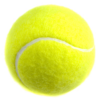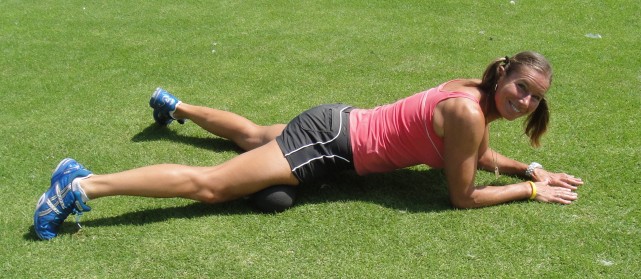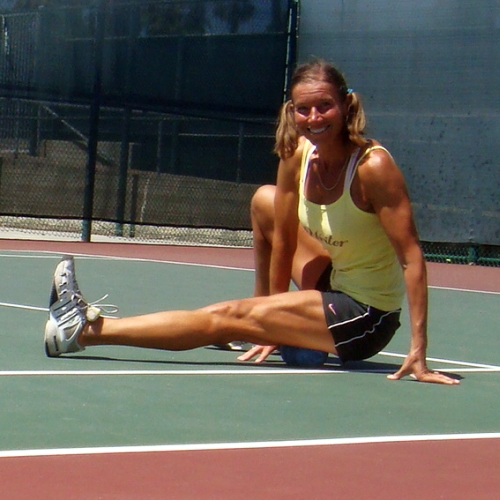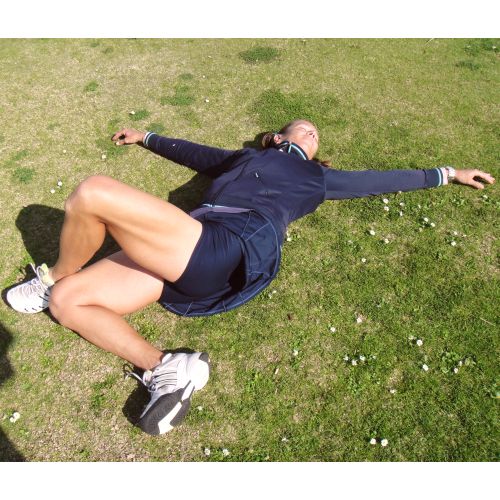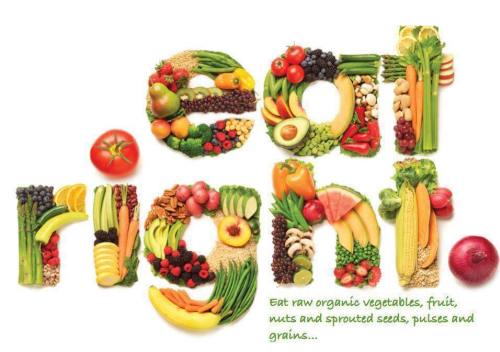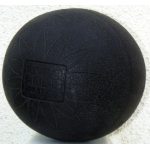During the past few weeks, so many people and tennis players around me have been complaining about some kind of knee problem. I listen, look at them to see how they stand and move, touch and squeeze here and there on their quadriceps, they squeak and jump up in pain and think what a magic that I found this painful spot just like that.
If they just knew…
How may painful spots (so called trigger points) I have found on myself and all the athletes I work with. We are basically the same. Different, but have similar “athletic” problems.
One of the biggest issues for tennis players and other hard training athletes is an overactive and tight quadriceps muscle and hip-flexors. Quadriceps is a muscle of the front of your thigh. It has four heads, and it is the largest, heaviest and most powerful muscle in the body. The quadriceps tendon attaches to the kneecap (patella) that moves with the tendon. Free movement of the kneecap is fundamental to proper function of the knee joint.
People don’t stretch them as much as they should, and if they do, it is just a quick bam-bam stretch and that’s it. It doesn’t really do much compared to how overworked the muscles are.
Tennis players are often quad-dominant, which means that their quadriceps are strong and dominating in the movements where their hamstrings don’t do their share of work because of their weakness.
When the quadriceps is shortened and tight, it creates unnecessary tension on the surrounding tendons. When the tendons connecting around the knee are constantly pulled and overloaded, you may experience mild pain or much worse inflammation and tendonitis. Often the pain you start experiencing first (like all my people that I mentioned in the beginning of this post) is a nice little wake-up call for you that you should pay more attention to taking care of your muscle tissue, especially the quadriceps and hip-flexors. A few quick treatments of myofascial release can be the “magic” that will heal your knee for now.
It is not really magic, but if you haven’t experienced myfoascial release (also called foam rolling) before then you may surprised how quickly you get positive results. After the initial surprise of how painful it is, wears off. Ha.
Quadriceps Myofascial Release
As with other myofascial techniques, your goal is to search for painful trigger points by applying pressure. When you find a spot, keep pushing and breathing deeply until most of the pain goes away. Move on another painful spot.
An easy way to do it is rolling on a roller or a ball. Some of my favorite are RumbleRoller, The Grid Roller and MyoBall. I have and use them all, they are all slightly different, and I recommend to have them all in your collection, eventually. In the beginning, you can use a foam roller because it is a little bit softer and less painful. However, you will work yourself up toward the firmer rollers very soon, so I wouldn’t even waste my money on the foam roller, and just get the firm one and go with it. It is going to be painful, but oh so useful.
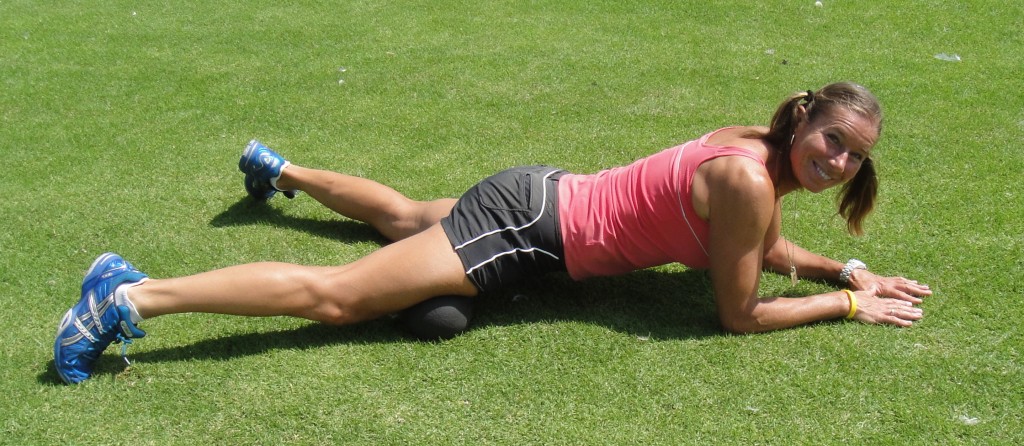
- Lie down on the floor face down.
- Place the ball or roller under your thigh and support yourself on your hands or elbows.
- Move slowly until you find a painful spot. Stay on it while breathing deeply.
- Move an inch up or down and around, until the worst pain goes away.
- Search for another spot and repeat. Nice slow motion combined with deep breath.
- Work all the tissue in the front, inside and outside of the thigh.
- Keep going until you get rid of nearly all trigger points.
Repeat this technique regularly, especially after your tennis practice or fitness training. If you have serious imbalances, you can roll out your thighs a little bit before your tennis practice too. Another good time is at night, before you go to sleep.
You will see a huge improvement in your physical wellbeing and athletic performance soon. Your knee problems will disappear quite fast as well.
The quadriceps muscle is much abused muscle in athletes. Take a good daily care of it and you should play pain-free tennis forever.
If you like to have all the fitness tips close to you at all times, you can find a paper or Kindle book on Amazon.com. It is small enough to fit your tennis bag and you can work on your health any time.
